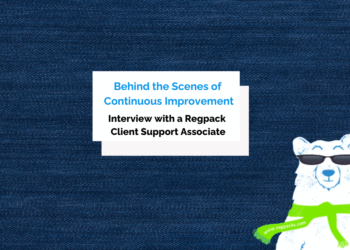When it comes to spreading the word about your brand, not every strategy has to cost a lot. In fact, some of the best results come from real people, creative thinking, and local connections. That’s where grassroots marketing and guerrilla marketing come in. These two styles may sound similar, but they work in very different ways. In this blog, we are going to explore both, so let’s get started:
What’s Guerrilla Marketing?
Guerrilla marketing is a fun, bold, and creative way of promoting your brand without spending too much money. Instead of traditional ads like TV or online banners, guerrilla marketing uses surprise, street-level creativity, and smart thinking to grab attention. It could be an unexpected street performance, a clever billboard, or even something that people see and talk about in a public place. The goal is simple: get people talking. Even better if they take photos, share it online, and help your brand reach more people without paying for ads. This kind of marketing is best for startups, small businesses, or anyone who wants to make a big impression with a small budget.
The Real Benefits of Guerrilla Marketing
Not every business has a huge advertising budget. But even without big money, you can still get people to notice your brand. That’s where guerrilla marketing comes in.
It’s not the usual kind of promotion. It’s smart, creative, and often unexpected. And when done right, it leaves a strong impression. Let’s look at why many businesses choose this method and how it actually helps.
1. It Doesn’t Cost Much
Among all its benefits, there’s one main reason people like guerrilla marketing: its affordability. You don’t have to spend thousands on TV, radio, or online ads. You just need a fresh idea and a bit of planning.
Even with a small budget, you can do something that gets a lot of attention. That’s the beauty of this approach. It’s perfect for small businesses, startups, or anyone who wants big results without big spending.
2. It Catches People’s Attention
We all use phones, and even if we just notice, we go through many ads in a day. Even there comes a time when we start ignoring advertisements. But guerrilla marketing does something different. It surprises people. It makes them look twice. That’s why it works.
Whether it’s creative street art, an eye-catching display, or something playful in a public space. These ideas break the normal pattern. And when something is different, people pay attention.
3. People Share It Online
Always know one thing about a good idea. It does not require any tactics to spread around people, a good idea only needs to the spread, and it does spread fast. If your marketing is funny, smart, or emotional, people will talk about it. They’ll take pictures, make videos, and share them on social media.
All this helps in making your brand reach more people, new ones. You can’t even imagine, but it helps you reach people than you even expected, and you don’t have to spend more. It’s one of the best parts of guerrilla marketing. You create something real, and people become part of it.
4. It Stays in People’s Minds
Normally, we don’t remember ads. Similarly, many people forget regular ads quickly. But they remember something that made them feel something. Guerrilla marketing does just that—it creates a moment people don’t forget.
Whether it made them smile, think, or feel surprised, it creates a lasting memory. And when people remember the experience, they remember your brand.
5. It Starts Conversations
It’s obvious that, when something is unusual or something out of the box, clever people just start talking about it. They tell their friends, and then this discussion goes on for longer. They even post about it. And word spreads.
This kind of word-of-mouth marketing is powerful. It’s not forced. It’s real. And it makes people curious about your brand.
6. Works Well for Local and Small Brands
Guerrilla marketing can be done on a small scale. You don’t need a big stage. A street corner, a college campus, or a park is enough.
That makes it ideal for local businesses. You can connect directly with the people around you and build a strong presence in your area.
7. It Lets You Be Creative
There’s no fixed rule. You can do things your own way. That gives you full freedom to come up with fresh, fun, and original ideas.
And when your marketing feels creative, people respect your brand more. It shows you care about how you show up, not just what you sell.
Best Guerrilla Marketing Examples That Made a Big Impact
As we know now, guerrilla marketing is all about doing something out of the box. Always something surprising and attention-grabbing. It doesn’t need a big budget. It only requires a nice idea that makes a person stop, think, smile or even take a photo or video. Below are some of the most creative guerrilla marketing examples that worked really well and are still talked about today.
1. UNICEF’s Dirty Water Vending Machine
Here’s what happened: In New York City, UNICEF set up a vending machine that gave out bottles of dirty-looking water. Each button had the name of a water-related disease like typhoid or cholera. Whenever people put in $1, the machine just gave a bottle back with one of the labeled diseases on it. But the point wasn’t to drink the water—the money was used to help provide clean water for children in need.
Now the question is, why did it work? This idea didn’t just ask for donations. It showed people how serious the problem really is. Seeing the dirty water made it real. It was one of those guerrilla marketing examples that people remembered, talked about, and shared on social media. It made people care, and that’s what made it successful.
2. Coca-Cola’s Happiness Machine
Coca-Cola placed a regular-looking vending machine at a college. But when students went to buy a Coke, the machine surprised them. It gave them extra drinks, pizzas, flowers, balloons, and even a big sandwich! Their reactions were recorded secretly and later shared online.
Why It Worked? This was a great example of guerrilla marketing because it made people happy and gave them something to remember. Coca-Cola didn’t just talk about “sharing happiness”—they showed it. And because the students’ reactions were real and joyful, the video became viral. It matched the brand perfectly.
3. Frontline’s Giant Dog in a Mall
What Happened? Frontline, a flea and tick spray brand, placed a huge photo of a scratching dog on the floor of a shopping mall. When people walked across it, and others looked from the upper floor, it looked like the people were little fleas crawling on the dog’s back.
Why It Worked: This campaign was clever and funny. It used the space in a new way. It turned everyday shoppers into part of the ad, without them even knowing. It clearly showed what the product was for, and it was so visual that people took pictures and shared them. This is a simple but smart guerrilla marketing example that made a strong point.
4. BBC’s Dracula Billboard
What Happened: To promote the Dracula TV show, in the daytime, the BBC put up a plain white billboard. It had wooden stakes sticking out of it and the show’s title. But at night, the light from the street lamps hit the stakes, and their shadows formed the face of Dracula.
Why It Worked: It was smart, creative, and a bit spooky, just like the show. The ad changed depending on the time of day, which surprised people. It matched the theme of Dracula perfectly. People were impressed and shared it online. That’s why it’s often listed as one of the most creative guerrilla marketing examples out there.
What’s Grassroots Marketing?
When it comes to building a strong brand, not every business needs a massive advertising budget. Believe it or not, but some of the successful marketing begins with small steps, it just starts with people. That’s exactly what grassroots marketing is all about. It’s a marketing style where real people help spread the word, often through local communities, personal connections, or everyday conversations. You don’t need to promote it to everyone at once.
Grassroots marketing is different, it focuses on reaching that one small group that really matters, the people who cares about your brand. Then, from those people, it lets your message grow naturally to other people. This method is personal, cost-effective, and full of trust. Whether you’re a local business, a startup, or launching something new, it’s a smart way to build a loyal audience from the ground up.
Benefits of Grassroots Marketing
Grassroots marketing isn’t about reaching millions all at once. It’s about starting small, with real people, and letting your message grow naturally. It’s powerful, cost-effective, and creates deeper trust. Here are some of the biggest benefits of using grassroots marketing for your brand or business:
1. Cost-effective and Impactful
One of the best things about grassroots marketing is that it doesn’t require a huge budget. Instead of spending money on ads or paid influencers, you work with everyday people—customers, fans, or community members—who genuinely like your brand. Even with a small budget, your message can spread far and wide if it connects with people. That’s why this method works so well for startups and small businesses.
2. Stronger Community
Connection With grassroots efforts, you’re not just selling a product—you’re becoming part of the community. Whether you’re hosting small events, supporting local causes, or working with community leaders, it brings your brand closer to people. When people feel like a brand understands them and cares about their space, they’re more likely to support it and talk about it with others.
3. Gives You Honest Feedback
When you’re close to your audience, you hear what they really think. Grassroots campaigns often give you direct feedback—what’s working, what’s not, and what people want. This helps you improve your product or service in a real way.
4. Makes Marketing Feel Human
Let’s be honest: people are tired of being sold to all the time. Pop-ups, banner ads, and constant promotions can feel cold or fake. But grassroots marketing feels different. It’s friendly, relatable, and human. It starts conversations. It builds real relationships. And that’s something people remember.
Amazing Grassroots Marketing Examples
If you don’t have a huge marketing budget, don’t worry. Grassroots marketing is all about starting small and real. It’s less about flashy ads and more about getting people to notice you in ways that feel personal and creative. Here are 5 grassroots marketing examples that actually work:
1. Do Something That Stops People (PR Stunts)
Sometimes, just doing something bold in public is enough. Like if a company smashed old hard drives in the middle of a busy street to say, “Hey, cloud storage is the future.” People would stop, take photos, and maybe post it. It’s different, it’s loud—and that’s the point.
2. Team Up with a Good Cause
One of the most heartwarming grassroots marketing strategies? Partnering with a local charity. Imagine a small shop saying, “Today, 20% of sales go to this local animal shelter.” The charity shares it too. More people come in. Everyone wins.
3. Put Ads Where People Least Expect
Instead of a boring flyer, try something a little more fun. Like an ad inside gym lockers for your new energy drink. Or a sticker in the elevator. When it shows up in a spot people aren’t expecting, it gets noticed—because it’s different.
Grassroots Marketing Strategies That Work
Now let’s look at the best ways to build your brand using grassroots marketing. These grassroots marketing strategies focus more on human connections, trust, and natural growth, not flashy stunts.
1. Start with Your Loyal Customers
Encourage them to spread the word. Offer rewards for referrals or reviews.
2. Create Real Conversations
Online or offline, respond like a friend. Make your marketing more about listening than talking.
3. Support Local Initiatives:
Be part of causes that matter to your community. It’s one of the best ways to be remembered for something good.
4. Use Grassroots Content
Real stories from real customers. No filters. No fancy edits. Just honesty.
These grassroots marketing examples may look simple, but they’re powerful when done right. They show that your brand doesn’t just care about profit, it cares about people.
But, Which is Best: Guerrilla Marketing or Grassroots Marketing?
So, here’s the big question: if both styles are powerful and affordable, how do you choose between them? Let’s know the difference between them, so it’s easier to decide what’s best for you.
Guerrilla Marketing
- Best when you want fast attention.
- Great for social sharing and going viral.
- Works well in cities, campuses, or busy public spots.
- Perfect if you have a creative idea and want a bold impact.
- It’s one-time, high-energy, and designed to surprise.
Grassroots Marketing
- Best for building slow, steady brand trust.
- Works great in tight communities or local networks.
- You won’t go viral overnight — but you’ll build long-term relationships.
- Ideal especially when you want to spread your message just through word-of-mouth.
- Focused more on people than public stunts.
Final Words
To sum it up, both grassroots marketing and guerrilla marketing offer exciting, low-cost ways to build a brand. While guerrilla marketing ideas focus on grabbing attention quickly through bold, creative acts. Grassroots marketing strategies work by building deep trust within smaller groups and letting the message grow naturally.
If you’re launching a new product, running a local business, or just trying to reach more people in a genuine way, these methods are worth trying. Start small, be creative, and let your message speak for itself. And remember, the most powerful marketing often begins at the grassroots level and grows into something much bigger.


















